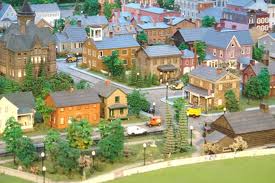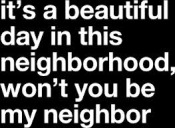 The Need For The 5 Fold – Part II
The Need For The 5 Fold – Part II
The Issue: How To Develop Community (Continued)
Today’s churches look for programs and models that have been proven “successful” by other churches and pattern their program after it. The five fold doesn’t recreate; it creates. “In Jesus Christ all things are new,” as the scripture says. The Holy Spirit can direct one local church to do one thing, yet has another church do something completely different. The Holy knows the hearts of men, so it knows what we are or are not willing to do, our faith levels, our commitment, our foundations of faith.
 If your church wants to reach out to the urban neighborhood, you might pattern other ministries: begin with a door to door evangelistic thrust handing out tracts about your new ministry, offer a soup kitchen, create a community food and clothing bank, develop a Rescue Mission or drug free half way house, etc, but do these proven and highly effective ministries fit with your congregations gifts? Will your church be over taxed eventually causing burn out if they tackle on all of this? Do you have the resources needed?
If your church wants to reach out to the urban neighborhood, you might pattern other ministries: begin with a door to door evangelistic thrust handing out tracts about your new ministry, offer a soup kitchen, create a community food and clothing bank, develop a Rescue Mission or drug free half way house, etc, but do these proven and highly effective ministries fit with your congregations gifts? Will your church be over taxed eventually causing burn out if they tackle on all of this? Do you have the resources needed?
On the other hand, if examined from a five fold perspective, the five gather to “seek” the voice and direction of the Lord in what to do to revitalize this neighborhood. During time of prayer and worship, the evangelist cries out in intercession for the lost, the shepherd sees the overwhelming need in the community and begins to prayer for provisions and direction, the teacher searches the scripture for a relevant scriptural foundation to base this endeavor, the prophet seeks the presence of the Lord, desires to hear from Him, and seeks a living gospel, and the apostle intercedes with the other four for the cause of the whole project. The Lord may first direct the team to do nothing but pray and intercede for a time, or canvas the neighborhood to feel its life or pulse, or walk the streets just to talk to people and begin basic relationships, etc. Out of those faith walks may come hints of direction. The Holy Spirit may reveal the needs, desires, atmosphere, and character of the community, giving the five a “sense” of the proper direction. Soon the needs, dreams, desires, wants, wishes, and challenges of the community become clear, and the Holy Spirit gives the five a plan to implement. Now they have to be obedient and “just do it”, not doubt.
Often the believer with an evangelistic bent leads off the endeavor, birthing the project. As it begins, the shepherd kicks in and begins maintaining an effective infrastructure. Both of their efforts come in line with Biblical examples taught by the teacher and are given life through the prophet while the apostle is amazed at what the Holy Spirit is doing, releasing the other four in the freedom to minister according to their desires and passions effectively.
 Instead of a soup kitchen, the Holy Spirit may make the members of this church open their homes to strangers, released prisoners, drunks and drug addicts helping them to kick their addictions, feeding them around their own kitchen tables while building relationships, making them feel part of a family, being accepted just where they are.
Instead of a soup kitchen, the Holy Spirit may make the members of this church open their homes to strangers, released prisoners, drunks and drug addicts helping them to kick their addictions, feeding them around their own kitchen tables while building relationships, making them feel part of a family, being accepted just where they are.
Service is always central to the five fold, for Ephesians 4 says we are to “equip the saints for the work of service.” The more the church community serves the neighborhood, the more the neighborhood looks at your church not as a religious institution but as a group that builds relationships and serves. When the religious barrier drops, the effectiveness of service through relationships thrives.
 Each neighborhood has its own flavor, its own uniqueness, its own personality and character from the diversity of people living there, the culture they have creative, and even the architecture and history, so the plan to conquer it for Christ has to be personal, unique, and diverse to be effective and can not be a copy of another church’s work. This is the power of the creative work of the Holy Spirit, and what better avenue to funnel that creativity than through the five fold giftings, passions, and point of views to bring unity in one’s community and neighborhood through diversity?
Each neighborhood has its own flavor, its own uniqueness, its own personality and character from the diversity of people living there, the culture they have creative, and even the architecture and history, so the plan to conquer it for Christ has to be personal, unique, and diverse to be effective and can not be a copy of another church’s work. This is the power of the creative work of the Holy Spirit, and what better avenue to funnel that creativity than through the five fold giftings, passions, and point of views to bring unity in one’s community and neighborhood through diversity?